Interview: Dr. Anthony Leiserowitz talks about his work on the new documentary ‘Meltdown’
22 February 2021The documentary Meltdown features climate communication expert Dr. Anthony Leiserowitz and renowned photographer Lynn Davis, as they explore the impacts of the climate crisis through the lens of art and science. Directed by Fred Golding (On the Mat) and produced by Mike Tollin (The Last Dance), the film shows magnificent footage of Greenland’s icebergs and glaciers.
We got the chance to (video) chat with Dr. Anthony Leiserowitz, Senior Research Scientist and Director of the Yale Program on Climate Change Communication, about Meltdown, the Arctic, and why he feels rationally hopeful about the climate crisis.
🔊 You can listen to our conversation by clicking on the audio player icon next to each interview question.
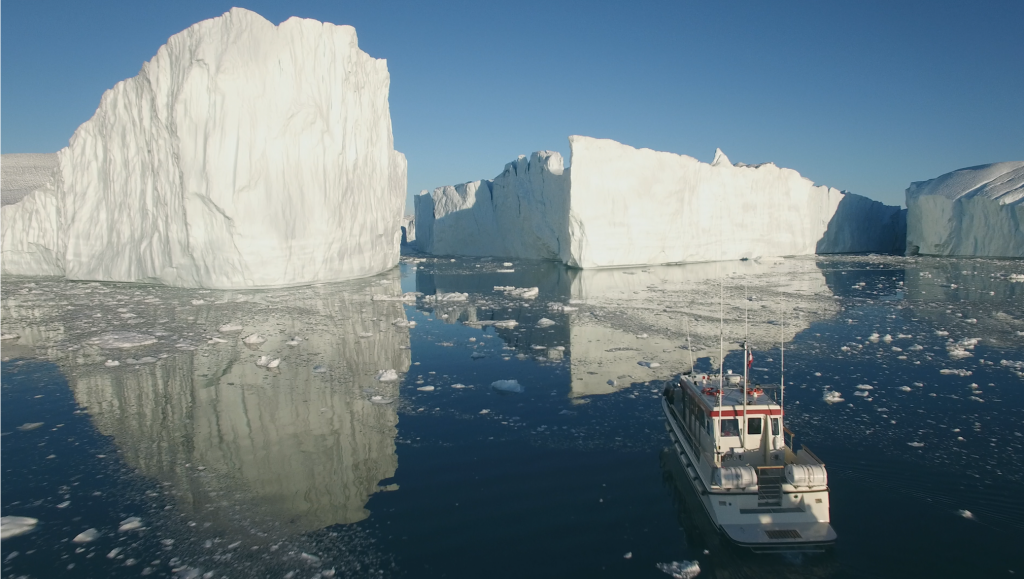
How did you first become involved with the project and what drove you to it or what interested you in it?
This project actually began with one of the filmmakers who had a new apartment in New York City and needed some artwork. And so, he came across the work of Lynn Davis in a gallery fell in love with it instantly. He was so struck by the magnificence of these photographs that he wanted to know what’s the backstory of this artist? And then I believe he got a chance to talk to her and learnt about the incredible story of this woman who pioneered this kind of photography 30 years ago. And then there was the fact that she kept coming back again and again to Greenland, which, of course, was coming to everybody’s consciousness increasingly as one of the critical Ground Zeroes of climate impacts. And so, he, as a filmmaker considered this is a great story and asked Lynn, “How about if we take you to Greenland back to your location?”, because she had already said that she was wasn’t going back anymore. And she said, “I would love to do that. But I don’t know anything about climate change. You got to bring somebody who can talk to me or bring some expertise.” And I believe it really wasn’t anything more advanced than a Google search. For whatever reason, they ended up with my name and talked to me.
I actually have a long background of doing research in the Arctic myself. I work predominantly with Yupik Eskimo communities above the Arctic Circle in Alaska. I had done a lot of work looking at how these communities dealing with climate. I mean, they were some of America’s first climate refugees. I mean, that’s a whole other story and a really important one of how they were being impacted. Because as you well know, climate change is not evenly distributed. And the Arctic has warmed two to four times faster than the rest of the world. So, you know, I’ve had a long, long love affair with the Arctic, which I think is so important on so many levels, and unfortunately, so few people in the world appreciate it. All they know is just that it’s this really cold, snowy bleak place. Maybe they know it’s really dark during parts of the year. They’ve heard about North Pole expeditions, and they really don’t know anything else about it. And it’s just this vast, incredibly important, beautiful territory with incredibly important and ancient cultures and as well as modern culture. And, yeah, it’s an incredibly fascinating region of the world. So anyway, when they called, I was like, “You had me at hello.” And then the rest, so to speak, is cinematic history.
You briefly touched on your work there, we were wondering how you work both your past work on the Arctic, but also your current work on American perceptions of climate change, fit into your participation in the movie?
So, I’ve been studying how do people – not just in the United States but around the world – respond to the issue of climate change for about 30 years. I direct the Yale Programme on Climate Change Communication where we study “how do societies around the world respond?” This means, what do people understand and misunderstand about the causes and the consequences, and what are the solutions to climate change? How do they perceive the risks, like the likelihood and severity of different types of impacts from sea level rise to health impacts to fires and droughts, and so on and so forth. What kinds of policies do people support or oppose? And then, what kinds of behaviors are people engaged in around climate change and other global environmental challenges? How do people use waste to conserve energy at home and on the road, will they prefer the products and services that are better for the climate? Also, to what extent are they willing to reward or punish companies for their action or their inaction? And, I’ll just say quickly, there’s a lot of, potential leverage point where consumer activism can have a big influence on corporate behavior, which in turn can have a big influence on political behavior. The third major area is social behavior. So, do we talk about this issue? Or more often, why don’t we talk about it, but also the role of what are called social norms, these unwritten cultural rules that guide so much of daily life and, and decision making. And then last but not least, is political behavior – most notably, what leads people to become active citizens, and say, ‘I’m not going to stand on the sidelines and watch the world burn, but I want to get involved, roll up my sleeves and make a difference in my sphere of influence.’ For some people, it’s their family. For some people it’s their local community, it could be their local school. For some people, it’s running for president, right? So, I mean, it could be anything along that full spectrum. And then ultimately, as scientists, our question is why? What are the psychological, the cultural, and political reasons why some people get really engaged with these topics? Others are kind of apathetic, and some are downright dismissive and hostile, or at least they are in just a couple countries. And last thing to say there is that we do studies all over the world. We’ve done many, many studies in the US at the national, state and local level. But we’ve also done a lot of work in other countries. So, first, there were studies in China, India, we’ve just done a study of Brazil, we’re actually getting ready to do studies in about 32 countries around the world literally as we speak. So, so we look at this from a lot of different angles.
Back to that early in my career, I got fascinated with, with how do people respond to climate change when it literally is happening in real time in their not just their backyard, but their front yard and frankly, in their basement. And so that’s what led me to do about a four to five year project up in Alaska. It’s also a place that has warmed two to four times faster than the rest of the world. And where the impacts are very visible. I mean, it’s quite direct. So I went up and had the great privilege to travel around the state for several months, interviewing scientists, politicians, journalists, indigenous peoples and advocates, and I mean, a pretty wide swath of Alaskan society. Then did a statewide survey of the, of the state to try to understand how people were thinking about it. And then that ultimately led to more focused project in what’s called the Northwest Arctic Borough, which is a pretty vast region, right there, mostly above the Arctic Circle on the Chukchi Sea. And there I really did everything from help, like we organised a workshop bringing village elders and elder hunt hunters and so on, to come together to for the first time to really talk about climate change on a regional level. We did a survey of that community, we did a partner with a geomorphologist to study coastal erosion, and how that was changing and worked with the community to co-produce a set of maps of their own vulnerability, as they were looking at very real challenges of I mean, like, everything from the air strips were under threat, because of eroding permafrost to, you know, their grave sites were eroding into the water, into the ocean. You know, whole villages were looking at forced relocation. So, these were real time challenges. And so anyway, all that experience just led me to just completely fall in love with the region and, and the people and, and so on. And so that was kind of the backdrop for then this opportunity to go to Greenland.
Greenland is one of the central characters in the climate change story. It’s one of those places where we see the changes happening most dramatically, most quickly. And with such far reaching consequences – it’s not just what’s happening in Greenland. It’s what Greenland means for the rest of the world. You know, I’ve always been a big fan of the quip about the Arctic, which is even more true of Greenland, that what happens in the Arctic doesn’t stay in the Arctic. The Arctic is not some remote, exotic place that is on another planet. The changes there have enormous consequences for all of the world. We’re seeing that right now, in the United States, with this massive polar vortex that has dipped all the way down to Texas, there are millions of people without power, who are freezing; there have been multiple deaths. Well, that’s because of an Arctic airmass, that has now dipped down into places that are not used to it, that aren’t resilient, that aren’t prepared. And it’s breaking the infrastructure, it’s breaking our systems. That’s just one of many, many examples of how the Arctic is, in fact, deeply interconnected with the rest of our lives.
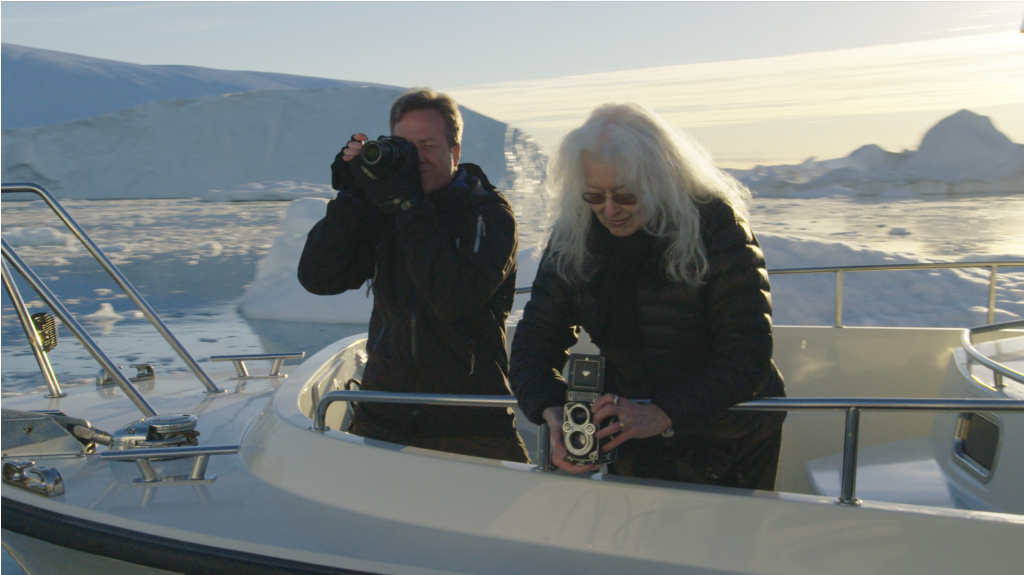
I have a couple of questions that connect to what you were just saying. In the film, there’s a sequence where you talk about how people are increasingly disconnected from nature. And that’s partly why there’s denial about the climate crisis. Do you think the film will kind of resonate with those people and help them reconnect to the environment, especially with the phenomenon you were just describing? And then there’s a second question that comes on to this. To be the devil’s advocate, will those who are in denial of the crisis be a receptive audience to East Coast liberals that are from a different way of life maybe than they are from?
Sure. So I think very importantly, and this is one of the major contributions we’ve made to academia, is recognizing there’s no single public. Often people just divide the public into believers and deniers. And that’s way too simplistic. In fact, there are very different audiences. And what we’ve been studying for over a decade is what we call Global Warming’s Six Americas; that there are six different audiences in the US, and they’re each coming at this issue from a very different starting point. And you need to know that. I mean, one of the first rules of effective communication is knowing your audience, and then meet them where they are, not where you are.
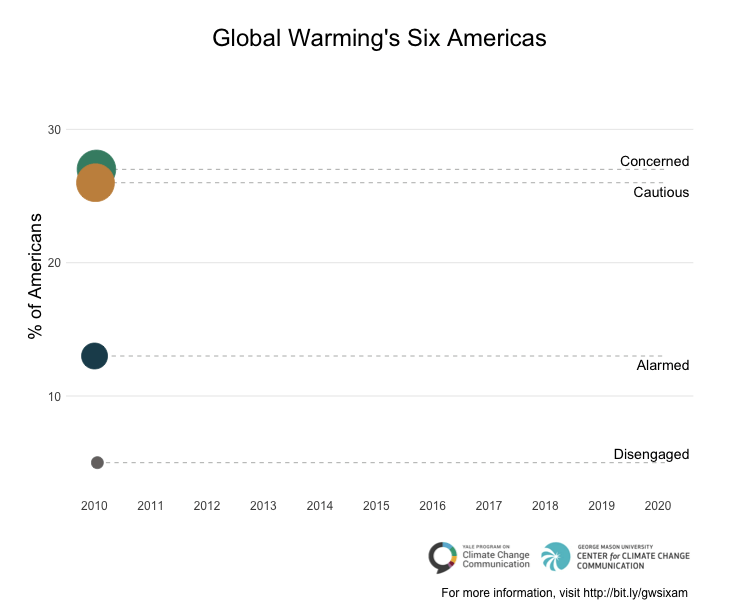
And so just very quickly, they form a spectrum: starting with ‘the alarmed’, which comprises about 26% of the country and which has actually grown dramatically in the past five years. These people are fully convinced that climate change is happening; human caused; urgent. They strongly support action and are totally locked in. Then a group would call ‘concerned’, that’s a roughly a quarter of the country. These people also think climate change is happening and human caused and serious, but they still think of it as distant, so that the impacts will not be felt for a generation or more, or that it’s distant in space; that this is about polar bears, or maybe developing countries, but not us, not me, not my family, right? So we can put it on the ‘back burner’, so to speak, not knowing that the pot’s boiling over on the back burner.
Then a group we call ‘the cautious’, who are still on the fence and confused, like, “Is it real? Is it not? Is it human? Is it natural? Is it serious? Is it overblown?” They’re paying attention, but just haven’t really made up their mind. Then a small group we call ‘the disengaged’ who basically tell us they’ve never heard of climate change. They maybe have heard the term once, but they don’t know anything about it. Then a small group of about 11, 12%, we call ‘the doubtful’. These are people who say, I don’t think it’s real; but if it is, it’s just natural cycles – so nothing we have anything to do with, nothing we can do anything about. And then last is ‘the dismissive’ who are about 8 or 9%, who are firmly convinced it’s not happening, it’s not human caused, it’s not a serious problem. And most of them quite literally tell us they’re conspiracy theorists. They say “it’s a hoax, it’s scientists just making up data, it’s a UN plot to take away our sovereignty,” etc.
So when you say denialists, that’s the group that you’re usually talking about. That’s only about 8 or 9% of the American public. They’re a tiny, tiny proportion. But they’re really loud. They tend to dominate the public square. And in fact, they’ve actually intimidated much of the rest of the population into silence what we call ‘climate silence.’ Because people fear like, oh, half or more of the country thinks climate change is a hoax. It’s not true. So that’s one of the reasons why we just have to talk about it.
So back to your question. No, this film is not going to appeal to the outright deniers, okay? They have deeper political, ideological values-based reasons for why they distrust climate change, distrust climate scientists, etc. So no, this film isn’t intended for them, it’s not going to reach them, it’s not going to affect them.
That said, there is an empirical basis for another related similar film called Chasing Ice, which you may know. Actually, the filmmakers took the film out to conservative audiences in the heartland of America, and found that many of those audiences came away just transformed. Because for most of them, they’ve never heard much about climate change, or the only things they’ve ever heard are the talking points of the true professional deniers. They deserve the term deniers because they’re getting paid to deny climate change. I think there’s a really important distinction between what we call the dismissive, who are just the public, you know, responding to the professionals, who are being literally paid to deny the seriousness or reality of climate change. But what they found with Chasing Ice is that that film actually did have significant effects, I mean, profound effects on many of those viewers, because they’d never seen this before. And to be able to actually see the evidence for themselves was really, really powerful.
Of course, Chasing Ice was specifically about [climate change], you know, using time lapse photography in this incredibly innovative way to actually show the retreat of glaciers. That’s not what Meltdown is really about. And I think that’s also a really important point is that Meltdown is not a typical climate change documentary. It’s not about the science, it is not an advocacy film, it’s not a Hollywood disaster movie. It’s really different. It’s artist and a scientist coming together to basically experience and talk about the meaning of this landscape through each other’s eyes. I mean, I got to see it through her eyes as a photographer, she got to see it through my eyes as somebody who studied climate change. And I think we both came away transformed. And it turned out there were a lot of deeper personal narratives that were woven into that experience as well.
What we saw in the film is that you both mentioned your respective sons. Is that a way to maybe also help bring about this intergenerational dimension of climate change and make it more relatable?
I hope so. I mean, that wasn’t the purpose of the film. And that very much emerged very organically out of the discussions. It wasn’t a design of the film. But I do think at least for me, personally, it is one of the animating emotional drivers, and I think, frankly, for many, many people, is coming to grips with the reality of climate change. And as I was saying before that it’s not distant. It’s actually here, right here right now. And the fact is that my son will be my age in the year 2050, when we know whether we are going to hold one and a half degrees, or two degrees, or three degrees, or if we’re really looking at horrific [scenarios] – it not that three degrees is any picnic.
I mean this is deeply personal, right? This isn’t happening on the other side of the world to people I will never know. Or it’s a species that I will never know. This is the world that my kid is going to grow up in. And, frankly, I hope to be around by 2050 too. And he’ll quite likely be here at 2100. So, for me it was that personal experience of not only getting to see in visceral reality, this process that I had been studying as a scientist and learning about from afar for many decades, but to actually see it, to touch it, to literally taste the ice. You know, and to see it for myself – it’s just as human beings, we just can’t help it. That’s an incredibly powerful experience for any of us.
Film is one of those ways to share that experience vicariously with a much larger audience. And our hope, or at least my hope with the film is that people come away with at least some sense of not just what’s happening, but the emotional weight of what’s happening. And I think, I have a statement in the in the film where I talked about looking into the abyss. Literally, I mean, yes, it was looking into an abyss. But it was also I’m talking metaphorically of looking into the abyss of what we are unleashing on this planet right now unless we act right now to greatly reduce our carbon pollution. I hope the viewers take away at least some small taste of what I was experiencing.

You’ve touched on this theme of giving the audience something to feel hopeful about and in her TED Talk your colleague Professor Katharine Hayhoe talked about the need for ‘rational hope’ to make these transformative system-wide changes that we need to stay below 1.5 degrees warming. In David Attenborough’s most recent documentaries and films like Meltdown we see this new genre of rationally hopeful documentaries emerging. Do you think this is the beginning of a new era of these kinds of nature and climate communication films? And what do you hope for them to accomplish?
That’s a great question. It’s certainly something that I have spent many years now trying to wrench the film community, and frankly everybody, from businesses to government, journalists, to creatives. I talked to authors, screenwriters, playwrights, musicians – trying to help them understand that it’s really important to do two things – not one or the other. My message to the larger community is that people tend to just gravitate to one side of this versus the other. And it’s really about both: One is you really do need to give people a clear-eyed understanding of the risks. It is absolutely important to have a clear-eyed understanding of what’s at stake, because this is why it matters. Without taking it to extremes of doom and gloom, and that we’re all doomed and that there’s nothing we can do about. That’s just wrong! And yet, that’s a narrative that is out there.
On the other hand, you also have to couple it with a sense of – as you’re calling it – rational hope. We actually have everything we need to solve this problem right now. You know, we don’t need to invent ‘cold fusion’. I mean, it would be great if somebody got cold fusion out there – so please call me. But we don’t need it! We have all the capability that we need right now. And in fact, the good news is that the alternative or the new system is already rapidly emerging, and is far cheaper and far safer and far cleaner and far more reliable than the crap we’ve been relying on for the past 200 years, where we’re still doing stuff out of the ground and setting it on fire for our energy purposes. It’s time to move to a 21st century energy system where we’re harnessing the energy that swirls around us in the sun and the wind and coming from underground and in the tides. We are surrounded by energy – it’s just a matter of harnessing it.
And the great news is that it’s cheaper now than fossil fuels. So it doesn’t even have to be something that you should do just because of climate change and health and everything else; if you should do it, then for no other reason than pure economics, right? We are at the cusp of this incredible moment, of literally catapulting the whole world into a 21st century energy system. And to take a big step back, most of the big giant leaps in human civilization have happened when we have moved from one energy source to the next. Like when we went from just relying on your muscle power, to harnessing the power of fire, and domesticating animals. I mean, it radically transformed what civilization was able to do because we could grow surplus food for the first time. Likewise, when we first harnessed the wind, and when we first harnessed water power, and of course, when we first harnessed fossil fuels. I mean, the fact that we are talking right now on this computer is inseparable from the fact that we were able to exploit this energy source. We are right now on the cusp of taking another of those giant quantum leaps into a whole new paradigm.
And yet, we don’t see it right. We’re still kind of like, ‘Well, yeah, but I like my car’, or ‘You know, I still depend on this’ and ’Is it really there and is it really cheaper? And is it really reliable?’ – I mean that decision has already been made. The market is moving quickly; it just needs to be accelerated because that’s the last and perhaps most important point. And I did say this in the film: we should have acted 30 years ago, okay? But we didn’t. But it’s not too late. – But we don’t have infinite time. [There is] a window of opportunity, a window of time that we have to limit climate change because we can’t stop it now. And there will be pain and damage. We need to be increasingly prepared for what’s coming. But our window to hold off and to avoid the worst consequences is really limited. I mean, we’ve got 10 years to probably hold the one and a half and maybe 20 year if we’re going to hold the two degrees. And things get really, really ugly after that. So, you know, we have a moment, and the conditions are just ripe for the taking. But we’ve got to act. And that’s really the ultimate challenge we have before us right now.
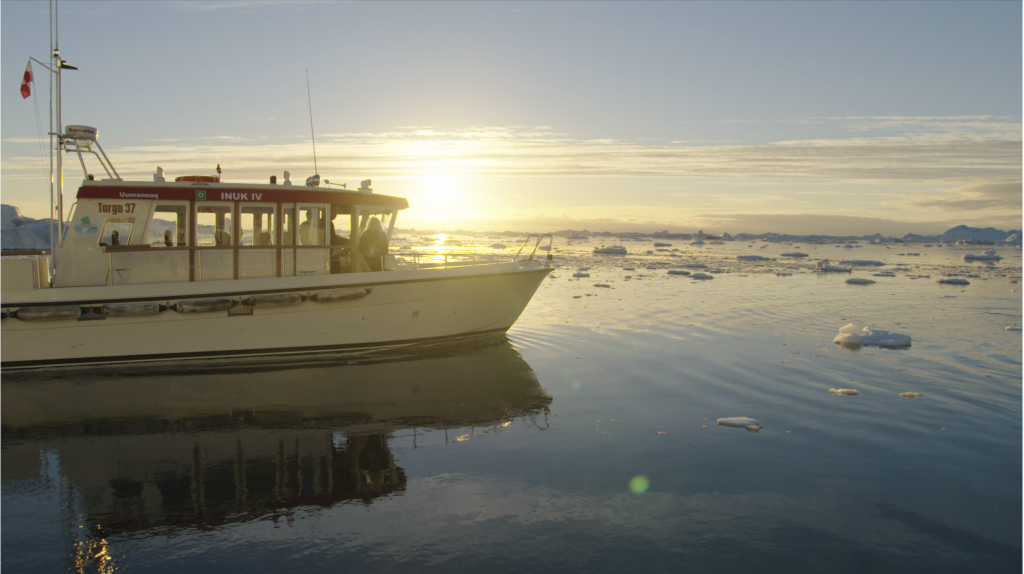
Meltdown is available on Amazon, Apple TV, Vudu, and Xfinity.
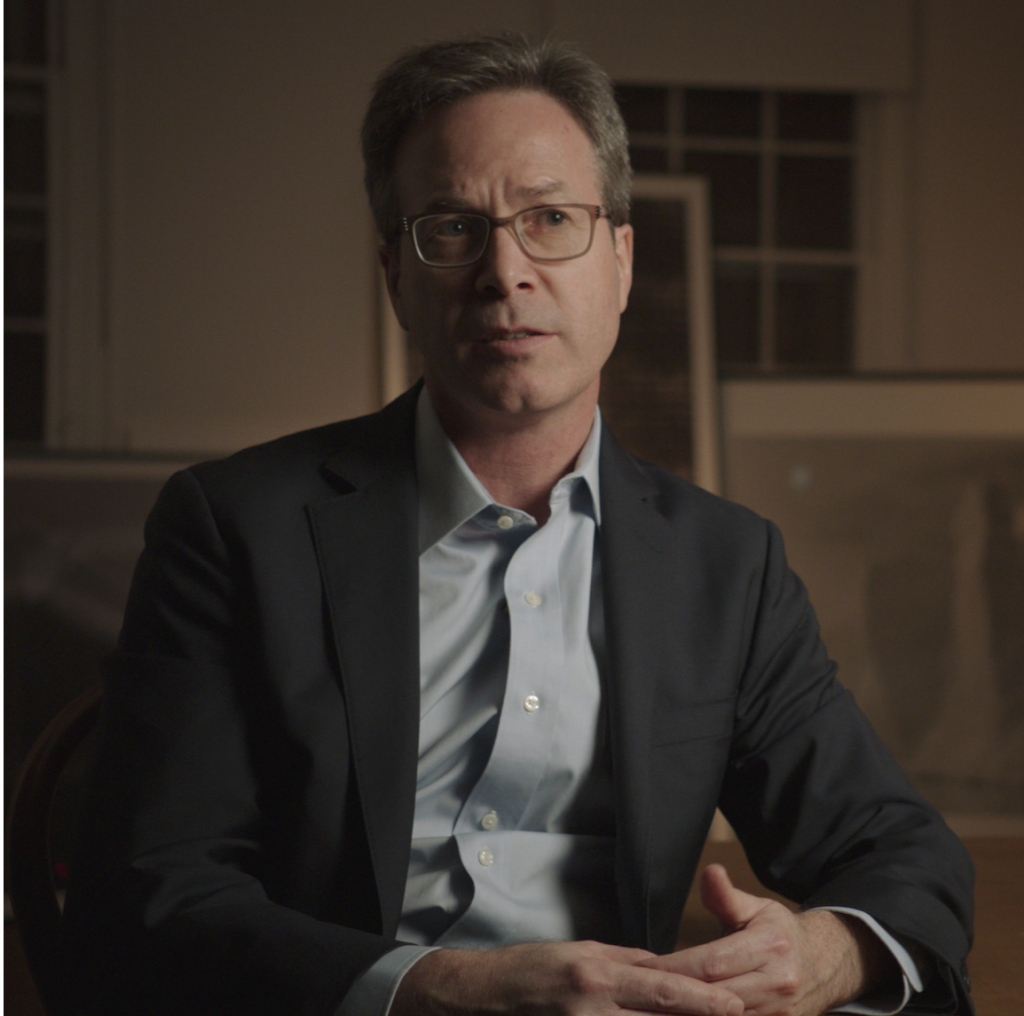
Anthony Leiserowitz, Ph.D. is the founder and Director of the Yale Program on Climate Change Communication and a Senior Research Scientist at the Yale School of the Environment. He is an expert on public climate change and environmental beliefs, attitudes, policy preferences, and behavior, and the psychological, cultural, and political factors that shape them. He conducts research at the global, national, and local scales, including many surveys of the American public. He has published more than 200 scientific articles, chapters, and reports. He has served as a contributing author, panel member, advisor or consultant to organizations including the IPCC (AR6 Report), National Academy of Sciences (America’s Climate Choices), the Smithsonian Museum of Natural History, the Harvard Kennedy School, the United Nations Development Program, the Gallup World Poll, and the World Economic Forum, among others. He is a recipient of the Friend of the Planet Award from the National Center for Science Education, the Mitofsky Innovator Award from the American Association of Public Opinion Research, and the Stephen H. Schneider Award for Outstanding Climate Science Communication from Climate One. He is also the host of Climate Connections, a radio program broadcast each day on more than 650 frequencies nationwide. You can follow him on twitter @ecotone2.
This interview was conducted by the Arctic Relations team (Dr. Hannes Hansen-Magnusson & Charlotte Gehrke).
- Impressions from our qualitative expert interviews on changing political priorities in the Arctic
- From ice to inspiration: A glimpse into the Arctic Circle Assembly
- Seasonal Geopolitics of the North Pole
- The Polaris expedition and the problem of bias in Arctic exploration history
- Beaches, bugs and plastic in Arctic Canada